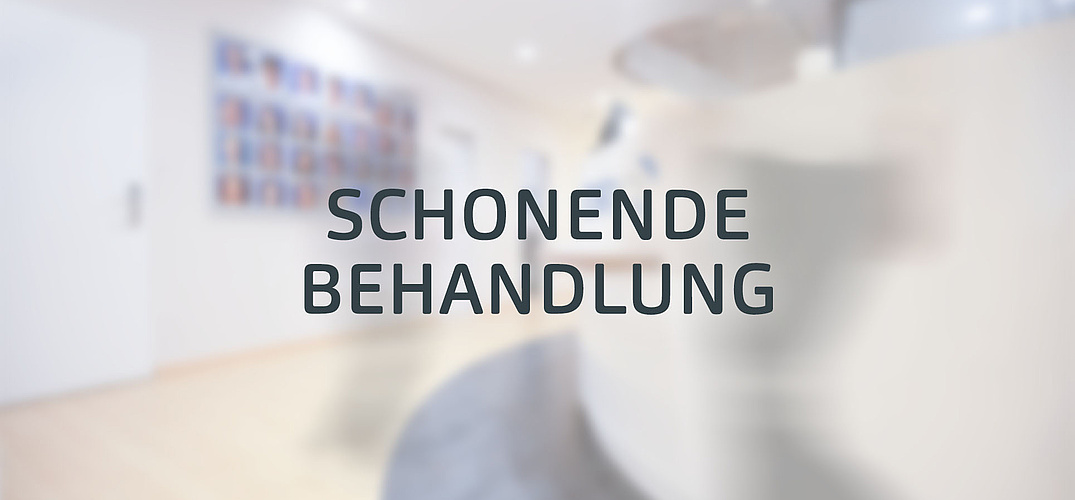Gentle Treatment Method
Minimally Invasive Implantology
Our patients can be sure of the best treatment at all times with our innovative operation methods. The new computer-aided, template-navigated implant method ‘Nobel-Guide’ enables us to carry out the implantation for you in a very gentle yet safer way. Additional work on the bone, e.g. with Piezosurgery, is often unnecessary.
Your Advantages:
Using a minimally invasive implantology method, the implant is either inserted into a small hole, which is drilled through the gum, or by using a mucous membrane cutter. The gum does not suffer and the operation time is shortened in this way. Thanks to the low post-operative discomfort, the probability that the implants grow into the bone quickly is very high.
The Operation
The 3D diagnosis forms the basis for the minimally-invasive procedure. This diagnosis provides exact information about the jawbone and determines the best position for the implants.
After evaluating the data from the computer tomogram, a template is produced which provides the exact position of the implants. Owing to the precision of this template, the implants can be placed in a minimally invasive way, very often without using a scalpel and stitches and in a relatively short time.
Your Advantages:
- This method means that no swelling or bruising occur and only slight discomfort is felt.
- Extensive dentures with 4, 6 or 8 implants per jaw are also possible without any great discomfort and open the way for older patients to receive a well-fitting implant-supported denture.
- The patient is not restricted in his work or his private life and long periods of sick leave are a thing of the past and any existing denture can be used as normal.
The denture
With the help of the template, a model of the jaw is produced. This serves on the one hand to make the drilling template for the operation and on the other hand to make the denture, which is used after the insertion of the implants. The patient profits from a high degree of accuracy even before the implantation.
The risk of losing an implant is thus reduced to a minimum and the lifelong sustainable denture is ensured.

